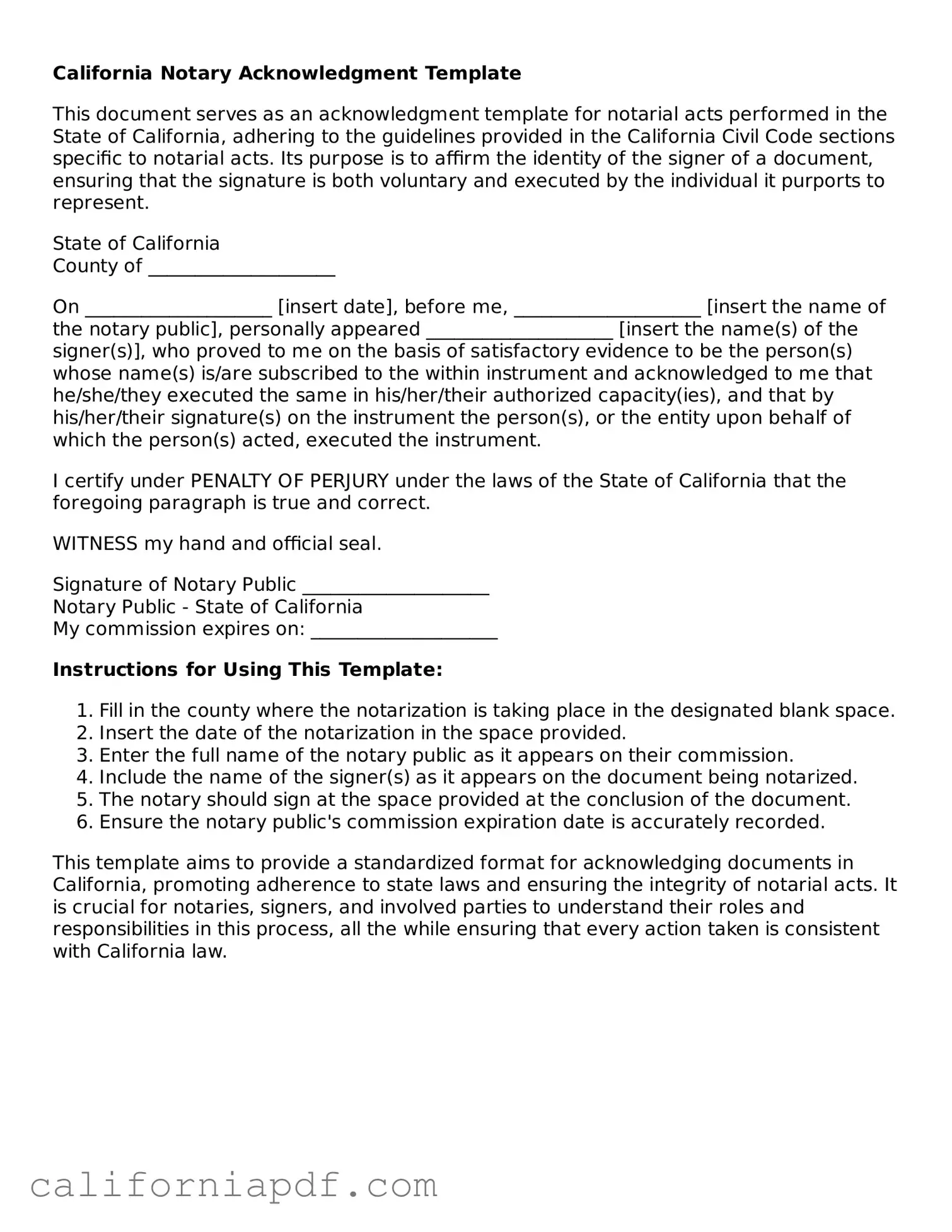The California Notary Acknowledgment form shares similarities with a Jurat, a document commonly used in legal matters. Both require the signer to appear personally before the notary, ensuring the identity of the signer and the authenticity of the signature. However, while an acknowledgment confirms the signer's identity and that they signed the document willingly, a Jurat also requires the signer to swear or affirm that the contents of the document are true.
Comparable to the Notary Acknowledgment is the Affidavit. An Affidavit is a written statement confirmed by oath or affirmation, used as evidence in court. Like the Notary Acknowledgment, it must be notarized to verify the identity of the signer and the truthfulness of the statement. Both serve the purpose of legal verification, though the affidavit focuses more on the content's veracity.
The Deed of Trust is another document bearing resemblance to the Notary Acknowledgment. This document is used in real estate transactions to secure a loan on a property. The involvement of the notary in both cases ensures that the signatures are authentic. However, the Notary Acknowledgment can apply to a broader range of documents, whereas a Deed of Trust is specific to real estate transactions.
Power of Attorney (POA) forms also relate closely to the Notary Acknowledgment. A POA grants someone the authority to act on another's behalf in legal or financial matters. The notarization process in both validates the identity of the document signer. This is crucial for the POA to be legally effective, similar to how acknowledgements aim to legalize documents by confirming signatory identity.
The last Will and Testament parallels the Notary Acknowledgment in its necessity for notarization to ensure its validity and enforceability. Both documents require a notary to confirm the signatory's identity and willingness. This process helps prevent fraud and ensures that the will's provisions are the true intentions of the deceased.
Loan documents, such as mortgages or personal loans, are often compared to the Notary Acknowledgment. They typically require notarization to protect against fraud, ensuring that the individual signing the document is indeed the person named in the documentation. This is similar to how acknowledgments function across various legal and financial documents.
The Quitclaim Deed is similar to the Notary Acknowledgment, as it transfers ownership of property without selling it. Notarization in both contexts serves to authenticate the identity of the signer and confirm their intention behind signing the deed or acknowledgment, providing an extra layer of security and validity to the transaction.
Similarly, the Bill of Sale is another document related to the Notary Acknowledgment. It represents the transfer of ownership of an item and usually requires notarization to confirm the authenticity of the signatures. Notarization ensures that the transaction is legitimate, similar to how an acknowledgment authenticates a signer’s identity and voluntary signatory act.
Release forms, which are used to relinquish legal claims, also necessitate notarization akin to the Notary Acknowledgment. The notarization of these documents verifies the signer's identity, ensuring that the release is genuinely intended by the person involved, thereby legalizing the dismissal of claims.
Finally, the Custody Agreement form, used to outline the agreement between parents about the upbringing of their children, frequently requires notarization like the Notary Acknowledgment. Both documents use notarization to authenticate the signers' identities and validate their consent to the terms described within the document, ensuring its enforceability and integrity.
